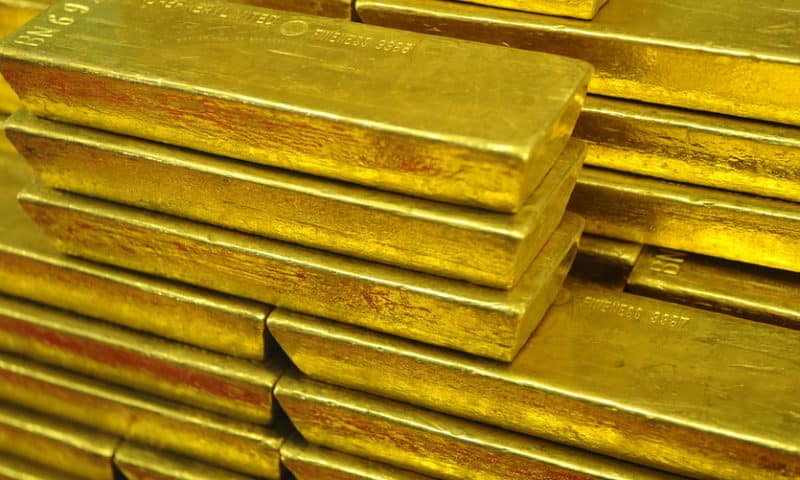Dollar weakens after U.S. inflation data, ahead of Brexit vote
Gold prices gained Tuesday, recouping most of the previous session’s losses, with the dollar weakening in the wake of monthly U.S. inflation data, as investors watched the outcome of a vote by U.K. lawmakers on Prime Minister Theresa May’s Brexit plan, which came after the finish for bullion.
Matt Stroud, a CME Group spokesman, said a “technical issue,” caused some metals and energy settlements to publish later than usual.
Late Tuesday, Prime Minister May lost the vote on her revised Brexit deal, as expected, by a margin of 149 votes, despite securing last-minute concessions from the European Union over the Brexit divorce deal on Monday.
Gold for April delivery GCJ9, +0.52% rose $7, or 0.5%, to settle at $1,298.10 an ounce after losing 0.6% Monday. In electronic trading after the settlement, gold futures touched highs above $1,302, edging slightly higher after the Brexit vote.
May SIK9, +0.30% ended 13.9 cents, or 0.9%, higher at $15.413 an ounce.
May faces a second vote Wednesday, with Parliament voting whether they favor a no-deal Brexit ahead of the deadline for officially leaving the EU on March 29.
The British pound GBPUSD, +0.1224% saw volatile trade throughout the session, while the ICE U.S. Dollar Index DXY, +0.01% a measure of the U.S. currency against six major rivals, was down 0.3%. Both currencies saw muted reaction, with traders having mostly priced in the outcome.
The dollar fell more steeply shortly after data revealed that the U.S. consumer-price index climbed 0.2% in February, matching market expectations, while the cost of living over the past year slowed again to 1.5% from 1.6%.
A core reading of inflation, stripping out volatile food and energy prices, edged 0.1% higher, representing the smallest rise since August. The yearly increase in the so-called core rate also slowed a tick to 2.1%. Gold tends to be viewed as a hedge against inflation, with readings of muted inflation providing little ammunition for gold bugs.
But given the data, “the Fed would appear to be justified in supporting the real economy by being patient and leaving interest rates on hold for a potentially extended period,” Paul Ashworth, chief U.S. economist at Capital Economics, wrote in note.
That softer tone to the dollar helped buoy gold, analysts said. A cheaper buck can be a positive for commodities priced in the greenback by making them less expensive to users of other currencies.
The aftermath of the Brexit vote could set the tone for gold. A victory for May could boost overall appetite for risky assets, which would likely put renewed pressure on gold, said Eugen Weinberg, head of commodity research at Commerzbank, in a note.
In other metals trade, April platinum PLJ9, +0.56% rose $15.10, or 1.9%, to $831.90 an ounce, while June palladium PAM9, +0.25% added $8, or 0.5%, to $1,490 an ounce. High-grade copper for May HGK9, -0.12% climbed 2.75 cents to $2.929 a pound, up 0.3%.
Among exchange-traded funds, the SPDR Gold Shares GLD, +0.61% edged up by 0.6% and the VanEck Vectors Gold Miners GDX, +1.75% added 1.6%.

